Julia Child’s Dreamy Poached Eggs Recipe: Brunch Magic Awaits!
Poached eggs by julia child dance on the culinary edge of breakfast brilliance, transforming mundane mornings into gastronomic celebrations.
This delicate cooking method might seem daunting, but it’s surprisingly simple once you grasp the technique.
Silky egg whites embrace golden, molten yolks that burst with rich, velvety flavor.
Professional kitchens revere this method as a mark of refined cooking skills, turning basic ingredients into edible art.
Each poached egg becomes a canvas of culinary precision, where water temperature and vinegar splash play critical roles.
Mastering this technique requires a gentle hand and just a hint of culinary courage.
Crack open a world of breakfast magic that will make your taste buds sing and elevate your morning meal from ordinary to extraordinary.
Quick Recipe Overview
Poached Eggs à la Julia Child: Ingredients
For Poaching Medium:For Egg Selection:For Serving and Preparation:Tools for Poaching Eggs the Classic Way
Julia’s Method for Perfect Poached Eggs
Create a gentle whirlpool in a pot of simmering water by stirring with a spoon. The spinning motion helps wrap egg whites perfectly around the golden center.
Crack an egg into a fine mesh strainer to remove loose whites. Add a splash of white vinegar to the water, which helps the egg hold its shape and gives a smooth, silky texture.
Carefully drop the strained egg into the center of the whirlpool. Let it dance in the simmering water for about 3 minutes until the whites become firm and opaque while keeping the yolk soft and luscious.
Scoop the poached egg from the water using a slotted spoon. Let it rest briefly on a paper towel to absorb any lingering water droplets. Serve immediately to enjoy the creamy, delicate perfection of your perfectly poached egg.
Egg Tips and Acid Ratio Tricks
Ways to Serve Poached Eggs on Dishes
Short-Term Storage for Poached Eggs
Print
Foolproof Julia Child Poached Eggs Recipe
- Total Time: 8 minutes
- Yield: 1 1x
Description
Legendary French chef Julia Child mastered poached eggs with classic Parisian technique. Delicate eggs float perfectly in simmering water, creating silky, rich protein perfect for breakfast or elegant brunch.
Ingredients
- 1 egg (large)
- 1 tbsp (15 ml) white vinegar
Instructions
- Water Preparation: Fill a sizeable pot with 3 inches of cool water, creating an ideal poaching environment with ample space for egg transformation.
- Temperature Management: Heat water to a vigorous boil, then reduce to a tranquil simmer where delicate bubbles softly kiss the pot’s base without turbulent movement.
- Egg Refinement: Strain egg through fine-mesh sieve to eliminate loose egg whites, then transfer the pristine egg to a ceramic ramekin, ensuring optimal poaching quality.
- Vinegar Integration: Add white vinegar to the simmering water, which acts as a binding agent to help egg proteins coalesce and maintain a compact, elegant shape.
- Vortex Creation: Using a long-handled spoon, craft a gentle whirlpool in the water’s center, establishing a natural current that will elegantly wrap egg whites around the golden core.
- Egg Immersion: Smoothly slide the egg into the water’s spiraling center, allowing the circular motion to naturally embrace and sculpt the egg’s delicate structure.
- Poaching Finale: Allow egg to rest undisturbed for 2.5-3 minutes, observing the white’s transformation from translucent to opaque while preserving a lusciously runny yolk.
- Presentation Finish: Extract the poached egg with a perforated spoon, briefly drain excess liquid, and rest on absorbent paper towel to ensure a pristine, moisture-free serving.
Notes
- Strain Egg Whites: Remove loose, watery egg whites using a fine-mesh strainer for a cleaner, more compact poached egg.
- Vinegar Magic: Add a splash of white vinegar to help egg proteins coagulate quickly and create a perfect egg shape.
- Whirlpool Technique: Create a gentle water vortex by stirring with a long-handled spoon to naturally wrap egg whites around the yolk.
- Timing is Crucial: Poach for 2.5-3 minutes to achieve a perfectly opaque white with a luxuriously soft, runny golden center.
- Prep Time: 5 minutes
- Cook Time: 3 minutes
- Category: Breakfast, Snacks
- Method: Poaching
- Cuisine: American
Nutrition
- Serving Size: 1
- Calories: 72
- Sugar: 0.4 g
- Sodium: 5 mg
- Fat: 5 g
- Saturated Fat: 1.6 g
- Unsaturated Fat: 2.3 g
- Trans Fat: 0 g
- Carbohydrates: 0.6 g
- Fiber: 0 g
- Protein: 6.3 g
- Cholesterol: 186 mg

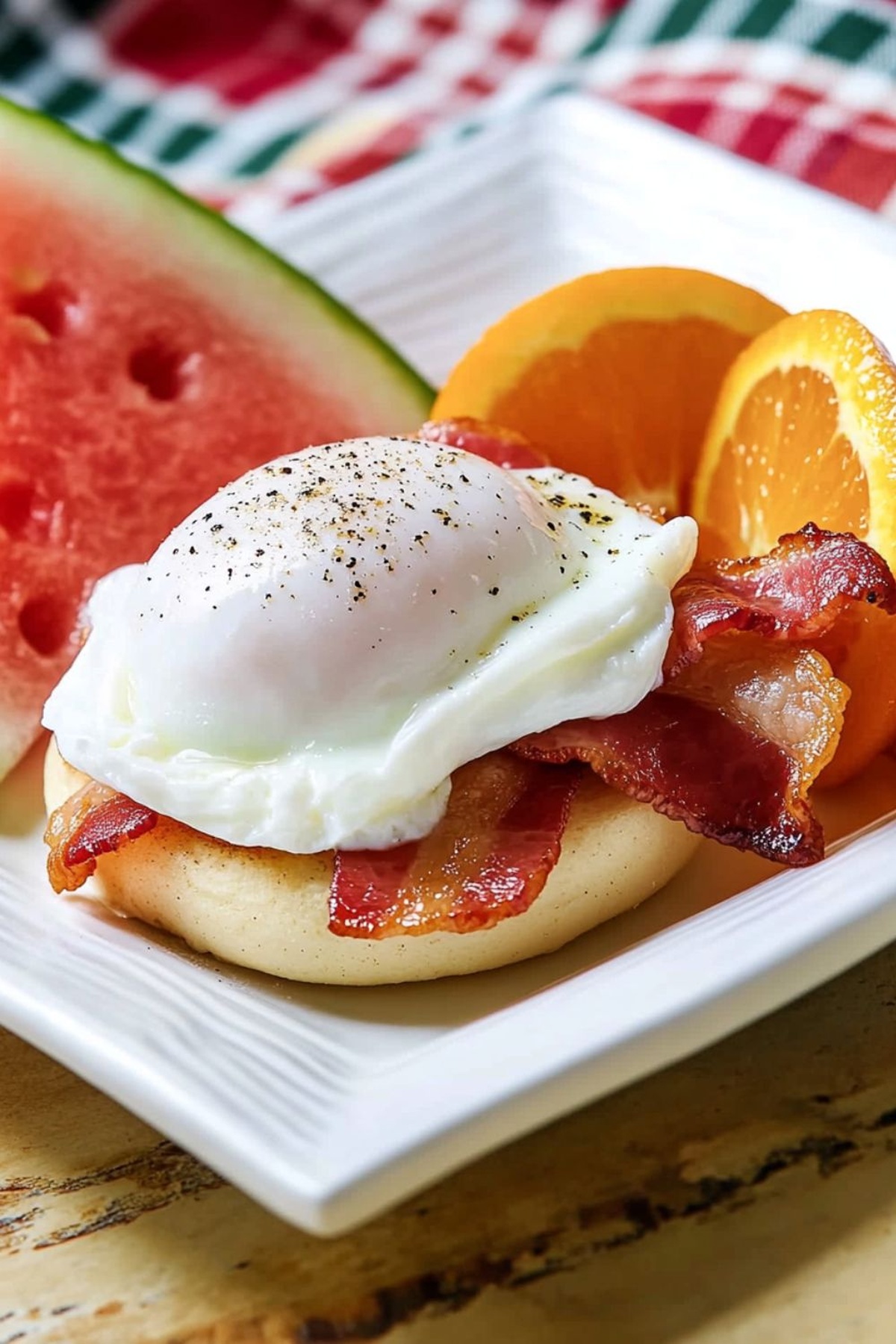
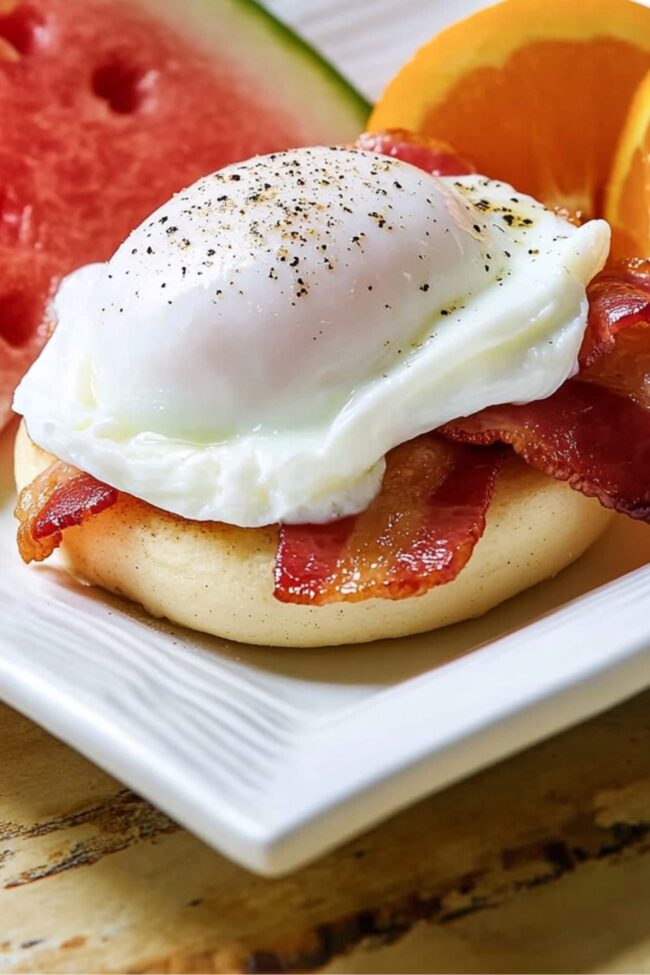
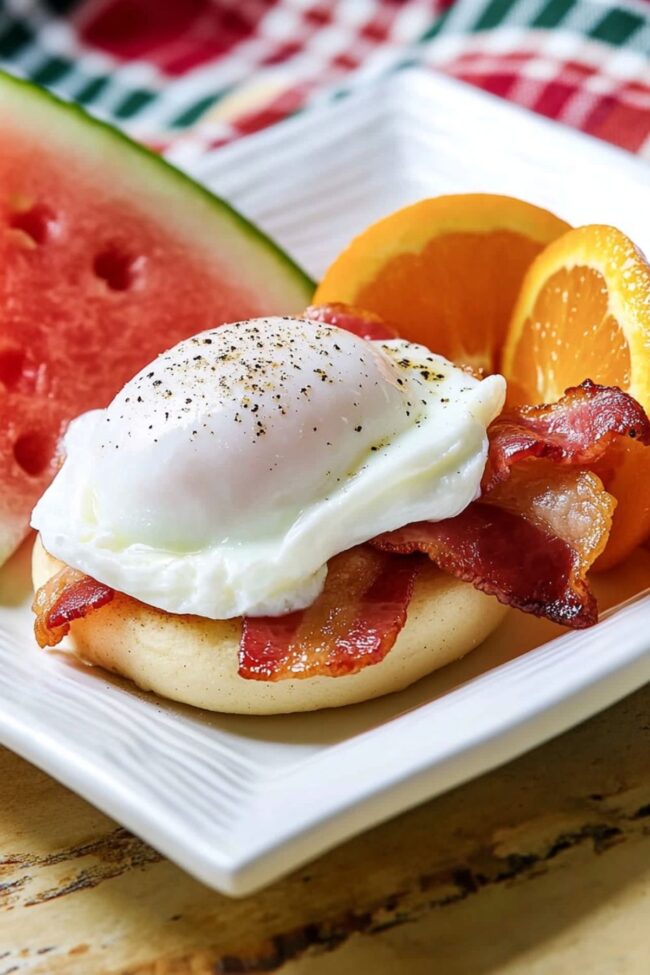
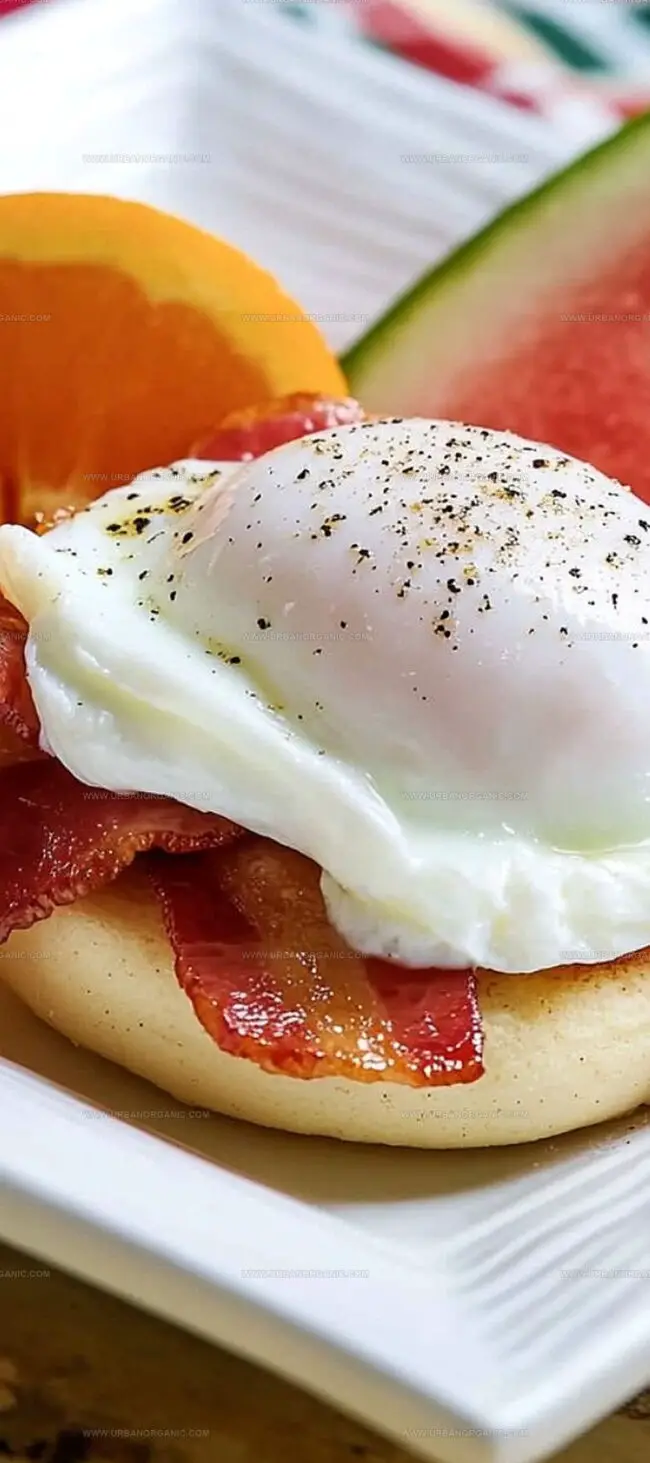
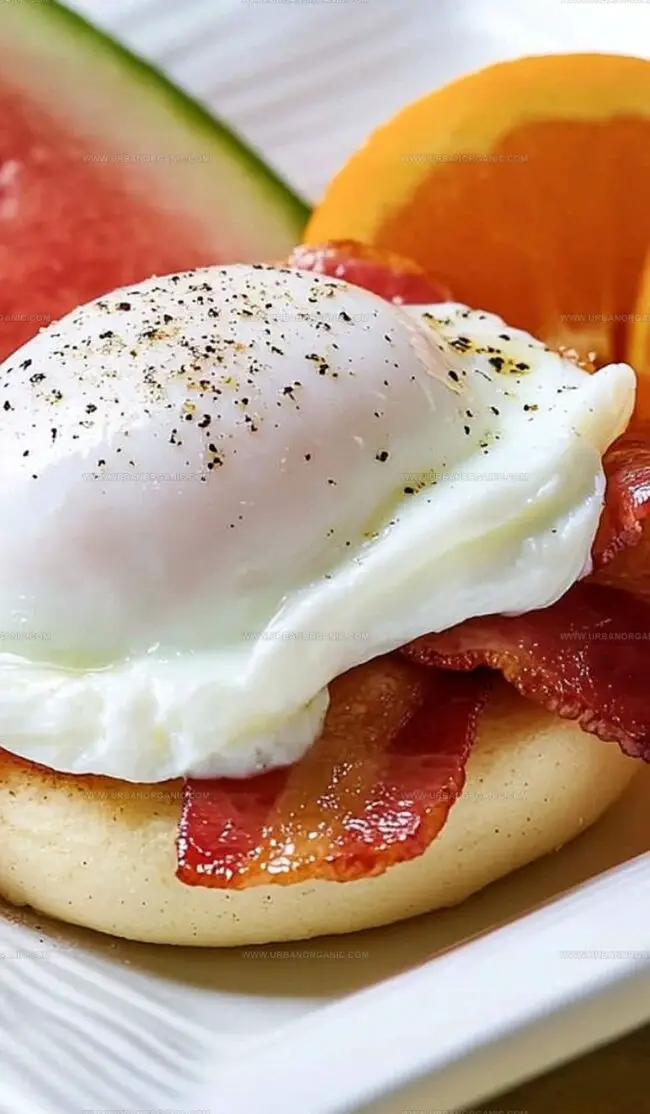
Michael Thompson
Founder & Culinary Director
Expertise
Classical & Contemporary Cooking Techniques, Global Cuisine Appreciation, Nutrition & Menu Engineering, Sustainable Cooking Practices, Farm-to-Table Cuisine
Education
Southwestern Oregon Community College
Michael grew up in Oregon, where he learned early that food tastes better when it’s fresh, local, and made with care.
After earning his degree from the Southwestern Oregon Community College, he focused his career on teaching others how to cook with the seasons, reduce food waste, and reconnect with what’s on their plate.
Michael keeps his cooking simple, sustainable, and full of flavor. His favorite part of the process? Watching people realize how easy and satisfying it can be to cook a single great meal from scratch.